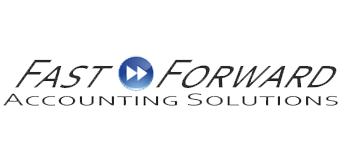A Favorite Savings Tool Of Financial Advisers Gets Better With ‘One Big Beautiful Bill’
Starting next year, more Americans than ever will be eligible to use one of financial advisers’ favorite savings vehicles: the Health Savings Account (HSA).
New provisions in a recently signed tax and spending law by former President Donald Trump, informally dubbed the One Big Beautiful Bill Act, significantly expand HSA eligibility. The law allows more Affordable Care Act (ACA) insurance plans, Direct Primary Care (DPC) arrangements, and plans with telehealth coverage to qualify for HSA use—potentially opening the door for tens of millions of additional users.
HSAs are highly regarded by financial professionals due to their triple tax advantage: contributions are tax-free, growth is tax-free, and withdrawals are tax-free when used for qualified medical expenses.
“The combination of pretax contributions, tax-free earnings, and tax-free withdrawals can add up to meaningful long-term savings, especially for healthy families who allow the funds to grow,” said Richard Pon, a certified public accountant in San Francisco. “Think of an HSA as a medical IRA.”
According to health and benefits platform Lively, the new law marks “the most significant HSA expansion in nearly two decades.” They advise individuals, employers, and brokers to begin preparing during the 2025 open enrollment period to fully benefit from the changes.
Expanded HSA Access: What’s Changing?
ACA Bronze and Catastrophic Plans Become HSA-Eligible in 2026
Currently, most Bronze and catastrophic plans don’t qualify as High-Deductible Health Plans (HDHPs) due to offering non-preventive services—like prescription drugs or doctor visits—before meeting the deductible, or having higher out-of-pocket limits than allowed.
Under the new law, these lower-premium plans will become HSA-eligible in 2026, expanding access to millions. In the most recent enrollment period, about 30% of ACA participants selected Bronze plans, while fewer than 100,000 enrolled in catastrophic plans, which are restricted to individuals under 30 or those with hardship exemptions.
Other Newly Eligible Plans and Arrangements
Direct Primary Care (DPC) Arrangements
Starting in 2026, individuals in DPC plans—defined as fixed-fee arrangements of up to $150 per month for individuals and $300 for families—can contribute to an HSA.
DPC patients pay a flat monthly rate directly to their primary care provider for defined services, avoiding traditional insurance billing. Under the new law, these DPC fees will also be considered qualified medical expenses payable with HSA funds.
Telehealth Coverage
HDHPs that include telehealth services without applying deductibles or copays will no longer be disqualified from HSA eligibility. This change is retroactive to plans dating back to January 1, 2025. As of 2022, roughly 30% of U.S. adults had used telemedicine within the past year, per the National Center for Health Statistics.
Why HSAs Matter: Key Benefits
The primary appeal of HSAs lies in their triple tax advantage:
- Tax-free contributions: Contributions reduce taxable income—either directly or via payroll deduction.
- Tax-free growth: Any interest or investment earnings inside the account are not taxed.
- Tax-free withdrawals: Funds used for qualified medical expenses incur no tax.
Additional perks include:
- No “use-it-or-lose-it” rule: Unlike Flexible Spending Accounts (FSAs), HSA funds roll over indefinitely.
- Investment potential: HSA balances can be invested, providing long-term growth for future medical or retirement needs.
- Retirement flexibility: After age 65, funds can be used for non-medical purposes without penalty (though standard income tax applies).
- Employer contributions: Many employers contribute tax-free money to HSAs as an incentive to enroll in HDHPs, which cost less to insure.
“Employers often encourage enrollment in HDHPs by offering HSA contributions,” Pon said. “It saves them money on premiums and gives you tax-free dollars to help cover out-of-pocket costs.”
Bottom Line
The recent changes to HSA eligibility represent a major shift in healthcare savings options. With ACA Bronze and catastrophic plans soon qualifying, and expanded access through DPC and telehealth arrangements, more Americans will be able to take advantage of one of the most tax-efficient savings tools available.
Now is the time for individuals and employers to prepare during the 2025 open enrollment period to fully leverage the upcoming benefits in 2026.
Source: USA Today







